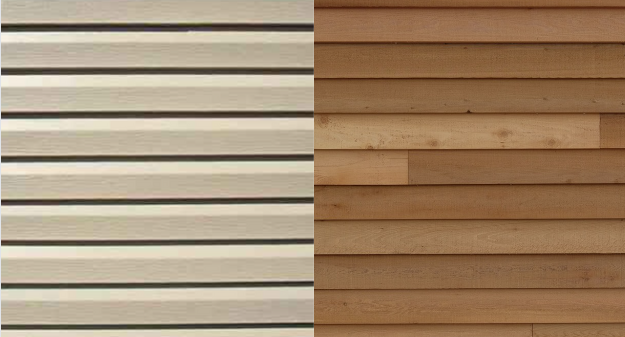When it comes to choosing window siding for your home, vinyl and wood are two popular options, each offering its own unique set of benefits and drawbacks. Understanding these can help you make an informed decision that best suits your needs and preferences.
Vinyl Siding
Vinyl siding is a go-to choice for many homeowners due to its affordability and low maintenance requirements. It’s a cost-effective option that doesn’t compromise on durability. Vinyl siding is resistant to moisture, pests, and rot, making it an ideal choice for homes in various climates. It’s also remarkably easy to clean—usually, all it takes is some soap and water.
One of the standout features of vinyl siding is its versatility. Available in a wide range of colors and styles, vinyl can even mimic the look of wood, stone, and other materials. This allows homeowners to achieve a high-end look without the high-end cost. Additionally, vinyl siding often includes insulation options, which can enhance your home’s energy efficiency.
However, vinyl siding isn’t without its downsides. While it can imitate the appearance of wood, it often lacks the authentic feel and charm of real wood. Repairing vinyl can also be tricky, as damaged panels usually need to be replaced entirely. Moreover, vinyl is made from PVC, a material that poses environmental concerns due to its non-biodegradable nature and the impact of its production and disposal.

Wood Siding
For those who value a classic and natural aesthetic, wood siding is hard to beat. It offers a timeless look that adds warmth and character to any home. Wood siding is also highly customizable—you can paint or stain it in any color to suit your style. Furthermore, wood is a natural insulator, providing better thermal insulation than vinyl, which can help keep your home warm in the winter and cool in the summer.
Wood siding can also boost your home’s value. Its aesthetic appeal and quality can be a significant selling point. However, this comes with a higher price tag, both in terms of initial costs and ongoing maintenance. Wood siding requires regular upkeep, including painting, staining, and sealing, to protect it from the elements. It’s also susceptible to damage from pests, rot, and moisture, and can warp, crack, or split over time.
Despite being a renewable resource, the environmental impact of wood siding should not be overlooked. The process of harvesting wood can be damaging to forests, and the paints and stains used for maintenance can have harmful environmental effects.
Deciding between vinyl and wood siding ultimately comes down to your personal priorities and preferences. If you’re looking for a cost-effective, low-maintenance, and durable option, vinyl siding might be the way to go. On the other hand, if you’re willing to invest in a material that offers unmatched aesthetic appeal and customization options, wood siding could be more suitable.
Consider your budget, your willingness to perform regular maintenance, and your aesthetic goals when making your decision. Both vinyl and wood siding have their merits, and choosing the right one will depend on what you value most in your home’s exterior.